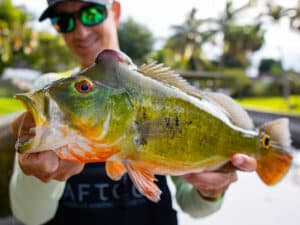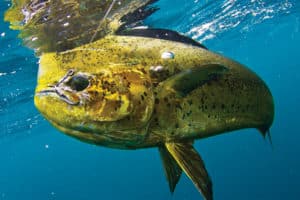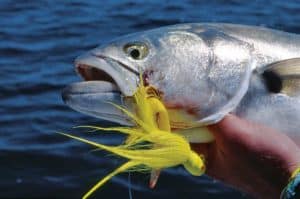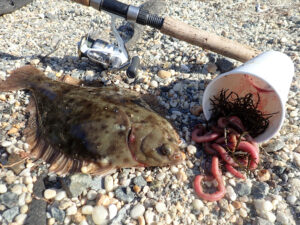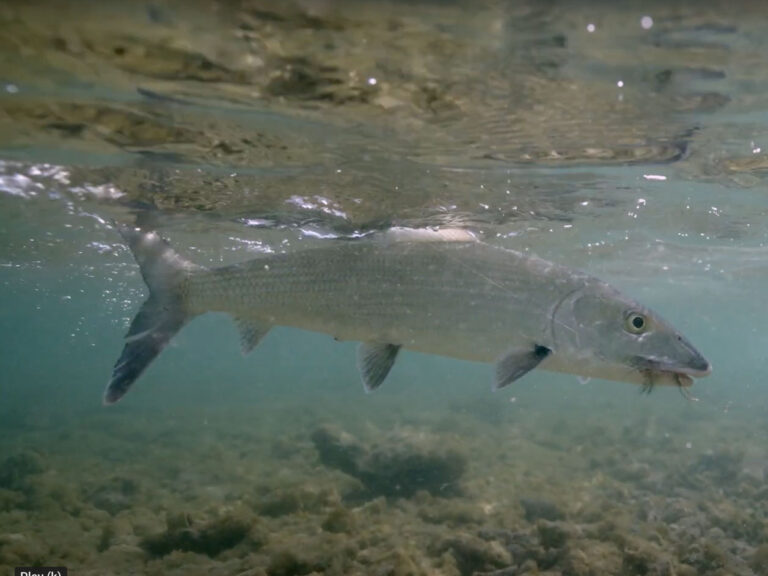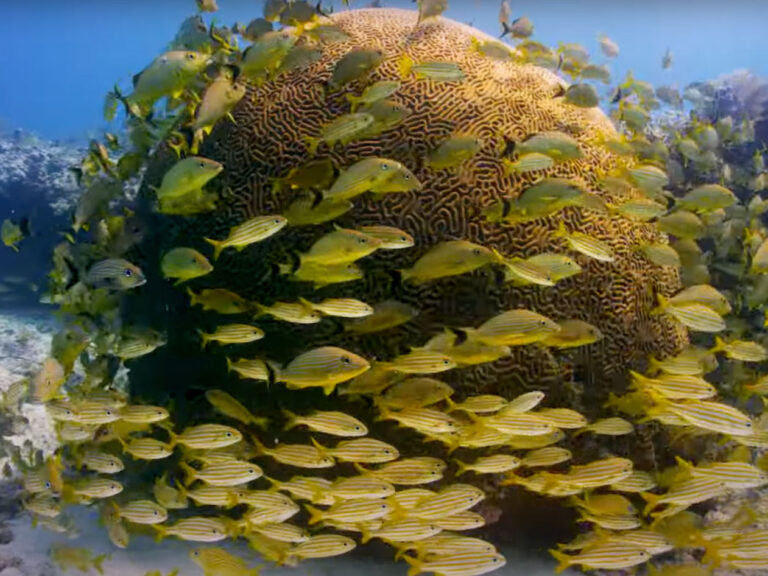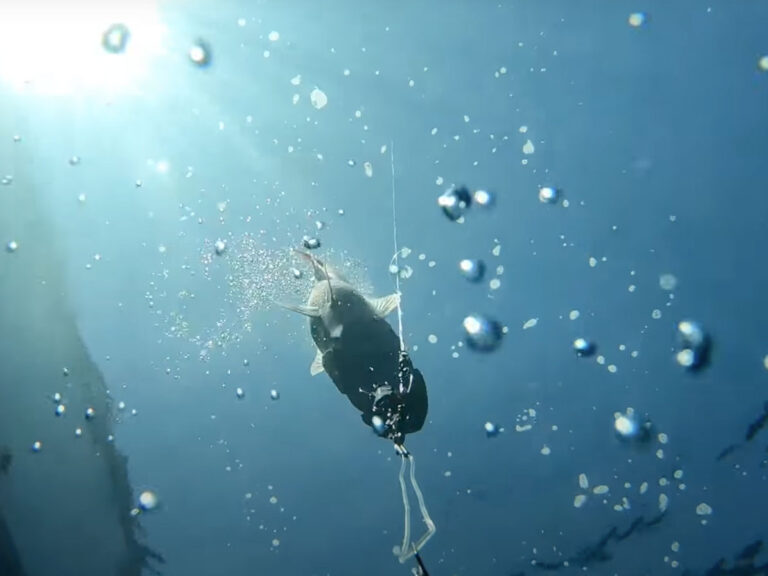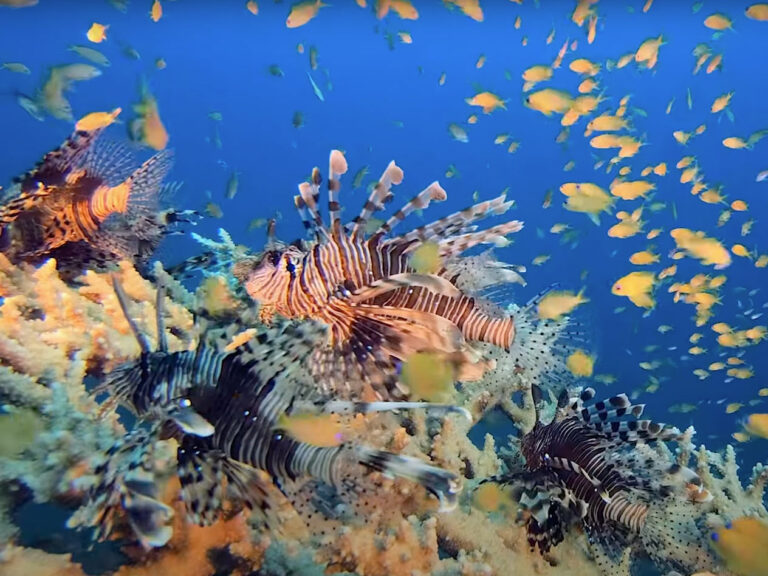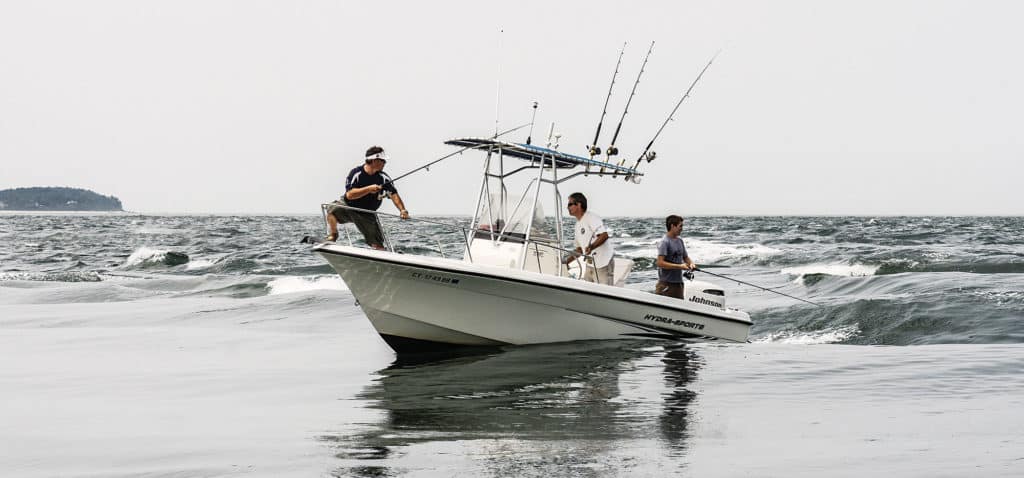
A light afternoon breeze on a fall morning tufted the surface as Elliott Taylor and I charged out of Niantic Bay in my center console, quickly leaving Connecticut astern. We were heading south to Plum Gut — one of the most fearsome rips in the Northeast — about 8 miles away, in New York waters. Twenty minutes later, we spotted a cloud of terns diving in front of the intimidating rip line. I pinpointed the 70-foot-deep upper edge of the main reef, circled around for a 200-yard run uptide, and chopped the throttle to neutral when we reached 120 feet deep. We were now drifting upslope stern-first on a giant conveyor belt of seawater terminating in a wall of 3-foot-tall standing whitecaps. I left the motor running. Minutes later, we began working 8-ounce diamond jigs off the bottom as several bluefish busted the surface nearby, virtually guaranteeing a successful day. I hooked up first, quickly followed by Taylor. “Fish on!” he called out while lifting hard into a slammer blue. “Man, this is great!”
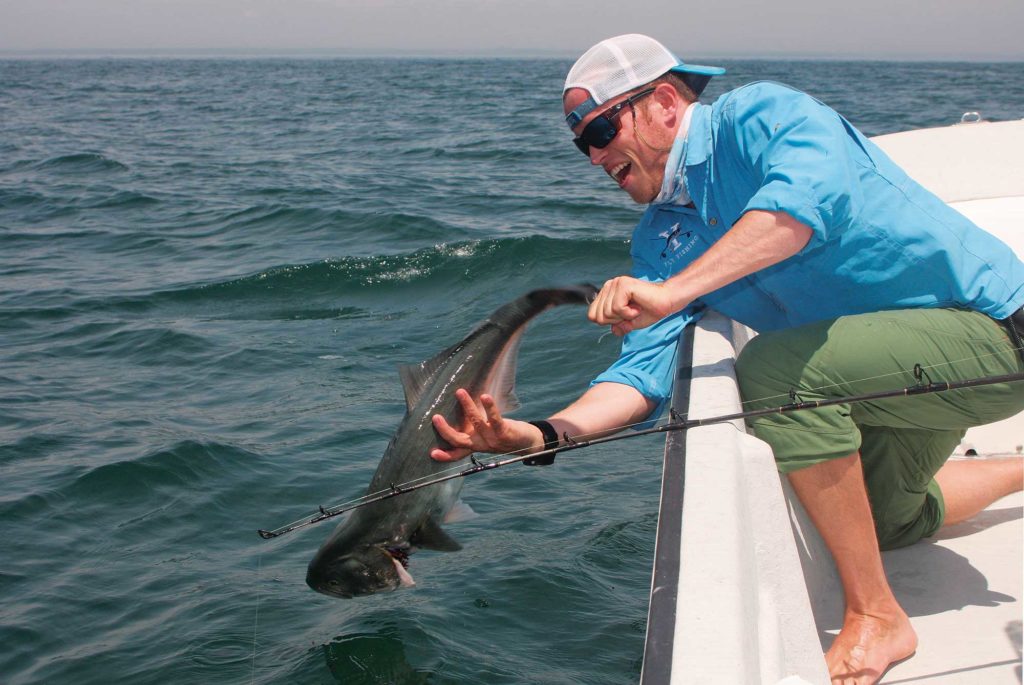
And it was great. The current sweeping us across the shallowing ledge held a mass of bluefish and striped bass stacked like lobsters at a New England clam bake. The challenge was to land and release our trophies in the glassy area before reaching the tumultuous whitewater beyond, although inevitably, sometimes a battle takes you into the chop. We spent the next two hours fighting fish and roaring back uptide from the structure, rarely making a drift without a hookup. We owed our intense success to knowledge of rips and being able to pinpoint that narrow sweet spot holding fish.
Rips provide three of the most important elements in fishing: structure, strong tidal flow and concentrated forage. But to be successful at plying rips, you must understand how currents move over abrupt bottom contours, and why they attract predators and prey.
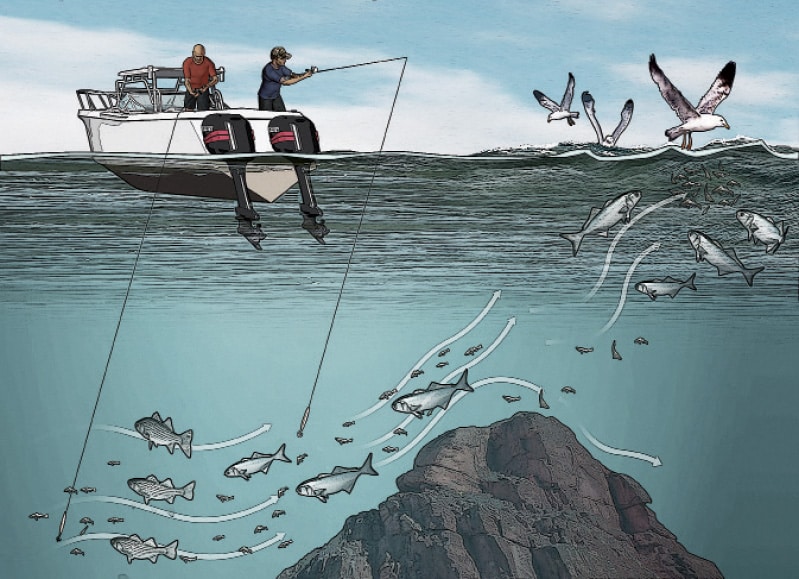
The Science of Rips
Have you ever tried the levitating-dollar-bill trick? It’s easy: Select a soft dollar bill, and hold one end perpendicular against your lower lip, with the bill hanging toward your chin. Now blow a continuous, hard breath across the top of the dollar bill. If done correctly, the paper will elevate horizontally and flap like a flag. But why? Air never pulls or sucks — it only pushes. So, blowing across the top of the bill should push it down, right?
What happened was you changed the air pressure with the Bernoulli effect. When flowing air — or water — changes speed, its pressure changes. When you blow over the top of a bill, the moving air must squeeze between the paper and the air pressure above it. As the air squeezes through, it speeds up, loses pressure, and stops pushing down as hard. The still air below the paper has greater pressure and pushes the paper up. It’s the same principle that gives an airplane wing its lift. This is also how roofs fly off homes in a hurricane — they’re not blown off; they’re lifted off.
Due to the rounded shape of an aircraft’s wing, the air flowing over the top (longer) surface is moving faster than the air flowing across the flat (shorter) bottom surface. The Bernoulli principle implies that the pressure on the top surface of the wing — like the dollar bill — will be lower than below. This pressure difference, or “vacuum,” results in lift. That same effect applies to water reacting to its passage over a reef.
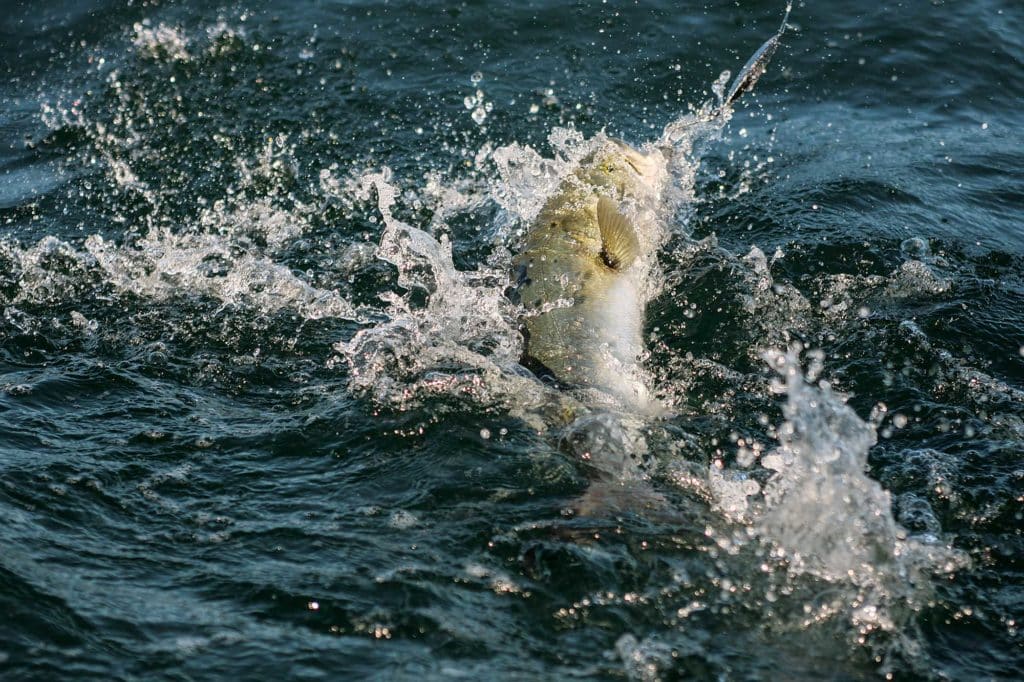
Because water is effectively incompressible, when its available area suddenly decreases between a reef and the surface, the current speed must increase in the narrower space to maintain the constant flow rate beyond the structure. This motion is also attributable to a similar phenomenon, the Venturi effect, which is the reduction in fluid pressure that results when a water stream flows through a constricted space, such as a garden-hose nozzle.
When the faster water above the reef collides with the slower water behind the structure, a series of standing waves forms as a rip line. The rip is easy to spot because the water ahead (up-current) of the rip line is calm, while the water behind (down-current of) the rip line is choppy and roiled. Near the bottom, an upsurging motion and change in pressure cause that vacuum effect.
Immediately ahead of the reef is a pocket of calmer, slower water. This comparatively quiet area is widely known by anglers in the Northeast as the sweet spot. Since it takes time and distance for the upwelling water to reach the surface, the sweet spot is located a short distance — that varies depending on the depth and current speed — in front of the rip line, not directly beneath its leading edge. That’s why Taylor and I fished in the calm water uptide of the rip and not in the rip line itself.
Game fish hold in the sweet spot to conserve energy and ambush baitfish that gather there to seek shelter and feed on organisms stirred off the ocean floor. Some predators, such as bluefish and false albacore, also chase prey up through the water column and grab it when trapped against the surface, usually just in front of the rip line. Occasionally, however, predators such as stripers will hold behind (down-current of) the reef, so if the conditions are safe enough, you can try a few drifts into the whitewater.
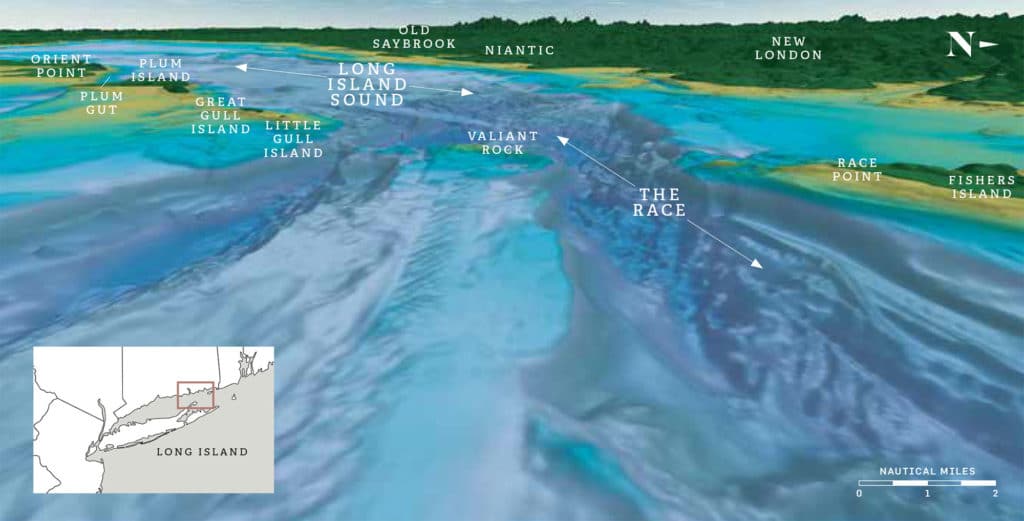
Finding Rips
Rips form in shallow or deep water. To locate rips in your area, peruse a chart and pinpoint spots where the depth rises and falls abruptly, preferably perpendicular to the current flow. The best spots appear where relatively flat ground meets a bottom contour with significant vertical relief over which a strong current passes.
Most shallow, nearshore reefs are easy to find because they’re marked with navigational aids. But deep reefs are also easy to spot by their signature rip line during a moving tide. The size of the waves along the rip can range from a subtle few inches — requiring a keen eye to locate — to 2 to 4 feet or more depending on the current, depth-change ratio, and wind direction and speed.
A stiff breeze opposing a strong current creates rip-line waves higher than when current and wind coincide because the surface water collides with the wind and “heaps up” where fast water meets slow water over the reef. These situations might cause extremely hazardous conditions for small craft, especially when drifting into a rip stern-first, thanks to lower-unit drag.
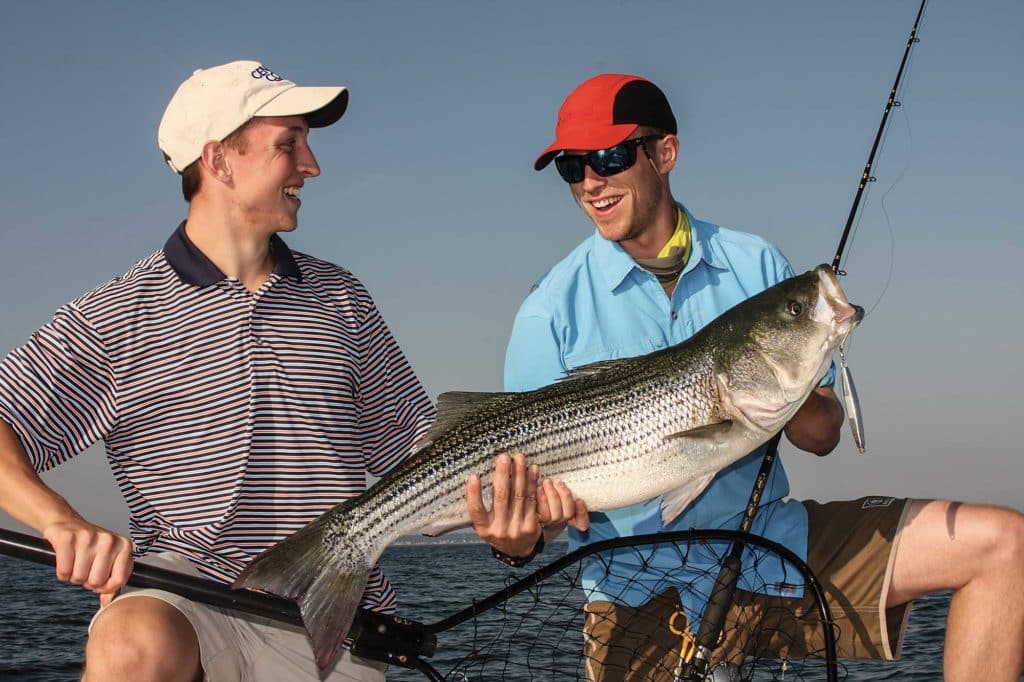
The size (height and length) of a rip line has no correlation to the fish activity below. Bigger isn’t necessarily better, and some rips — showing only the slightest riffles and no bird activity — might be stacked with predators along the bottom. On days when fish are chasing baitfish to the surface, anglers can spot working birds from a considerable distance, and these birds reveal the location of a productive reef. Once the tide slacks, however, rip lines and surface action vanish, with no indication of what lies beneath. Unfortunately, when rips stop showing completely, at slack tide, so does the fish action.
“During a slack tide,” says Capt. Greg Dubrule, owner of the party boat Black Hawk out of Niantic, Connecticut, “the bluefish disperse and disappear. After the tide changes and the current starts to make up, I can actually see them reassembling on the bottom and moving back to the face of the reef.”
The strong current in rips causes baitfish such as squid, herring, and butterfish to school and face the same direction, which makes them easy food for predators. Conversely, during slack tide, baitfish scatter, making them more difficult for predators to track and target. Likewise, game fish disperse, rest and stop feeding during slack water. That’s why fishing is often best during the first hour of hard tide — the prey resumes schooling, and predators are hungry after their rest.
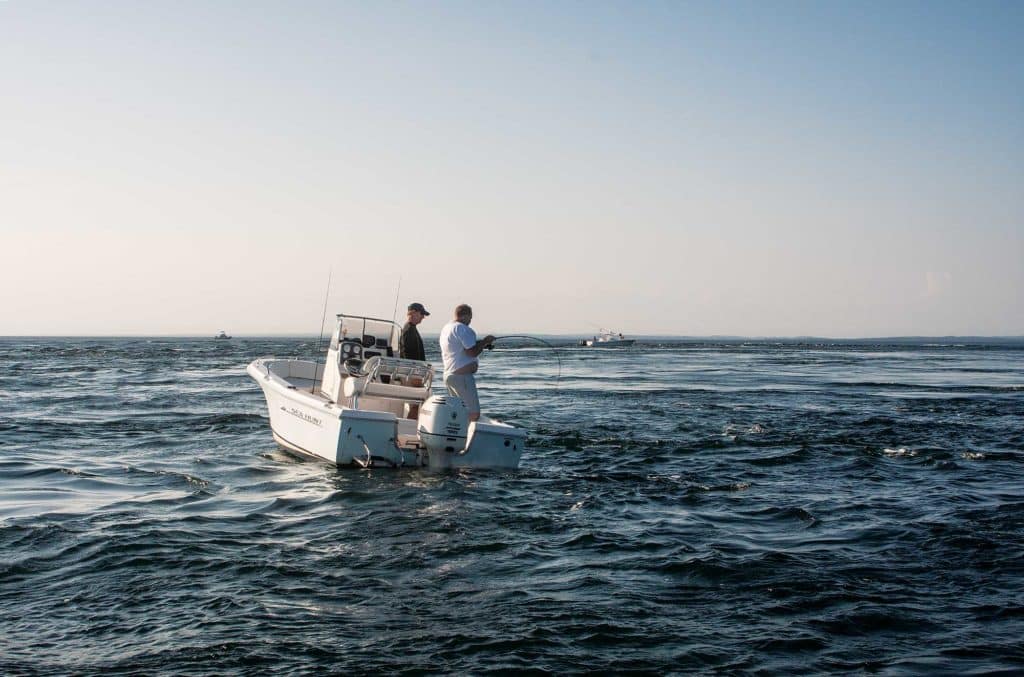
Fishing Methods
Trolling
Sharpies know that trolling rips requires more skill than just dragging a couple of lures behind the boat. Once you’ve reached a promising spot, look for the telltale rip line, which is your “road map” along which to troll. The goal is to parallel the rip line to cover as much productive water as possible. But to stay on course on the uptide side of the rip line — which is where the fish stage — you can’t simply steer parallel to the rip because you’ll be swept into it.
“Stemming the tide,” says Capt. Ned Kittredge, who runs Watch Out from southern Massachusetts, “means moving diagonally into the flow of a strong current so you can keep your lures in the strike zone along the front edge of the reef, maintaining an optimal position for the lures. You’ll have to experiment with line-length-to-water-depth ratio to keep your lures running along the bottom.
“I run up-current at a slight angle to the tide,” Kittredge adds, “so my lure isn’t swimming directly ‘upstream’ but rather diagonally across the structure and facing the flow. The sweet spot is just ahead of the reef, but on some days, the fish can be on top of or even just behind the ledge or shoal. Current speed and the presence of bait, along with your experience on each reef, dictate the best location on a given time. Keep trolling speeds slow — around 2 knots — because the current resistance adds to the lure’s motion. The best fishing action might come at the ends of a rip rather than in the middle. Hit the memory button [to mark a waypoint] on your GPS when hookups occur. Chances are that spot will be good next time — and even next year.”
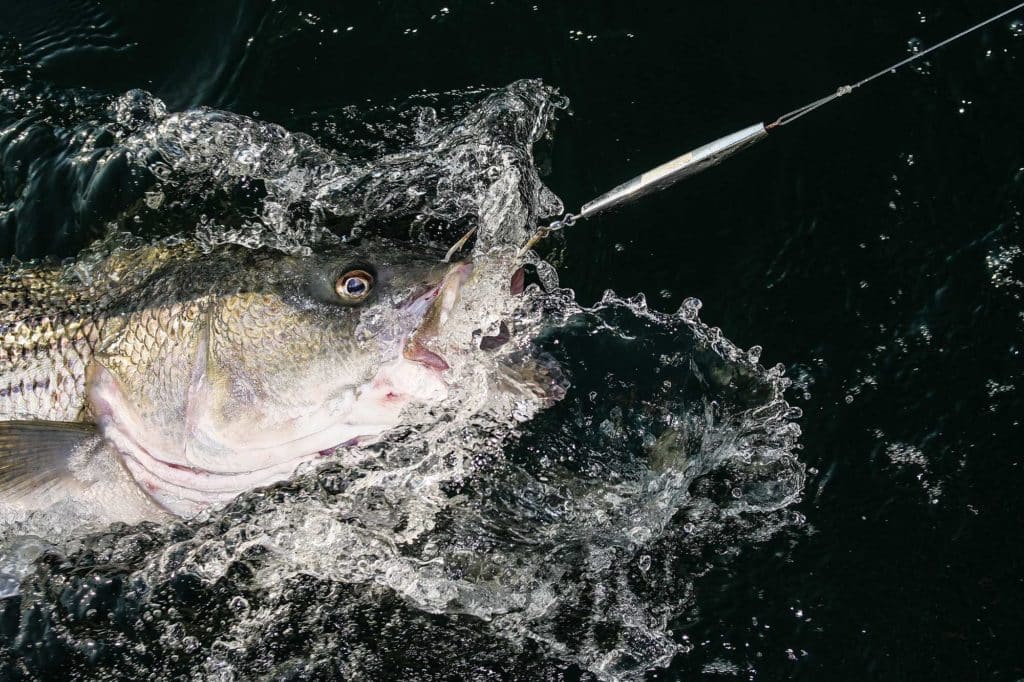
Jigging and Casting Diamond Jigs
Once you arrive at promising structure, motor uptide of the rip line while watching your depth finder. Your up-current run might range from only 50 feet ahead of a small, shallow, nearshore rip to 250 yards ahead of a huge rip like Long Island Sound’s Race. Stop the boat where the ledge levels to flat bottom, and as the current pulls the boat back toward the reef, immediately drop a diamond jig overboard and start working it vertically. Counterintuitively, boats drift faster than lures below them because deep water moves slower than surface water due to bottom friction.
“The best approach for diamond-jigging bluefish and stripers near the bottom is squidding,” says Capt. Kerry Douton, owner of the charter boat Dot-E-Dee from Waterford, Connecticut. “Free-spool your jig until it hits bottom. Immediately engage your reel, retrieve the jig 10 quick turns up, drop it back down fast, and hit again. Don’t let the jig rest on the structure because it’ll drag and hang up. Do that until you reach the rip.
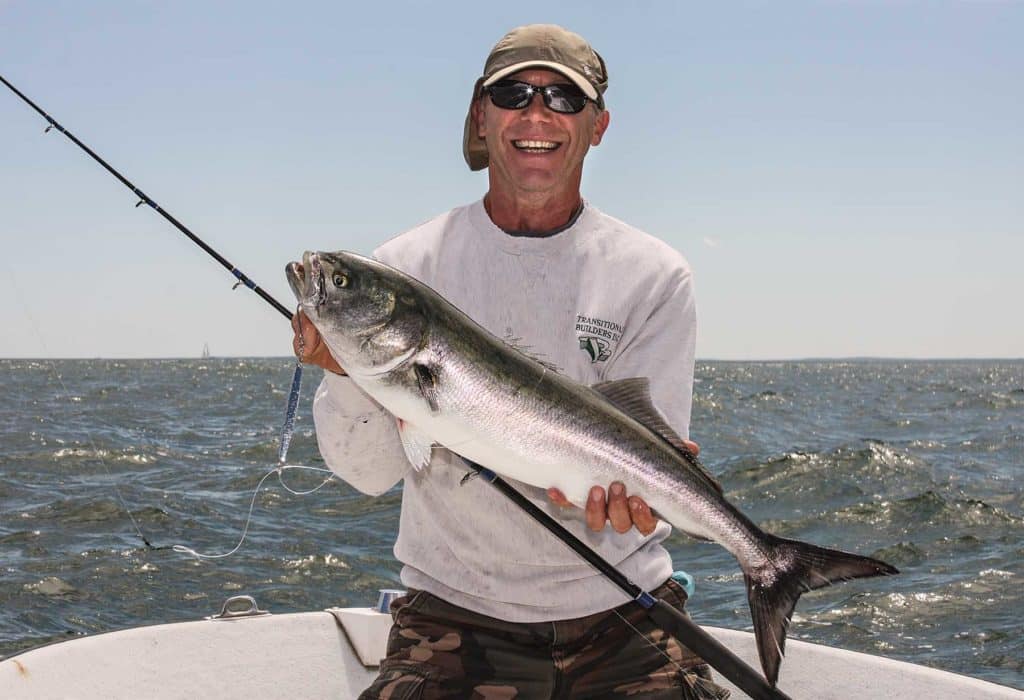
“Then reel in and run uptide again. Maintain a vertical drop whenever possible, which gives the jig better movement on the drop. Use the lightest diamond jig possible while maintaining vertical action. If your jig gains too much diagonal scope, reel all the way in and drop again.”
The same run-drift-run pattern is a good way to cast to breaking fish. In fact, one angler can diamond-jig the depths while the other casts a topwater, metal jig or lead-head with soft plastic, all effective when bluefish or false albacore are working on top. Or one person can man the helm, keeping the boat in gear and matching the current speed to keep the boat stationary in the action while boat mates cast to breaking fish.
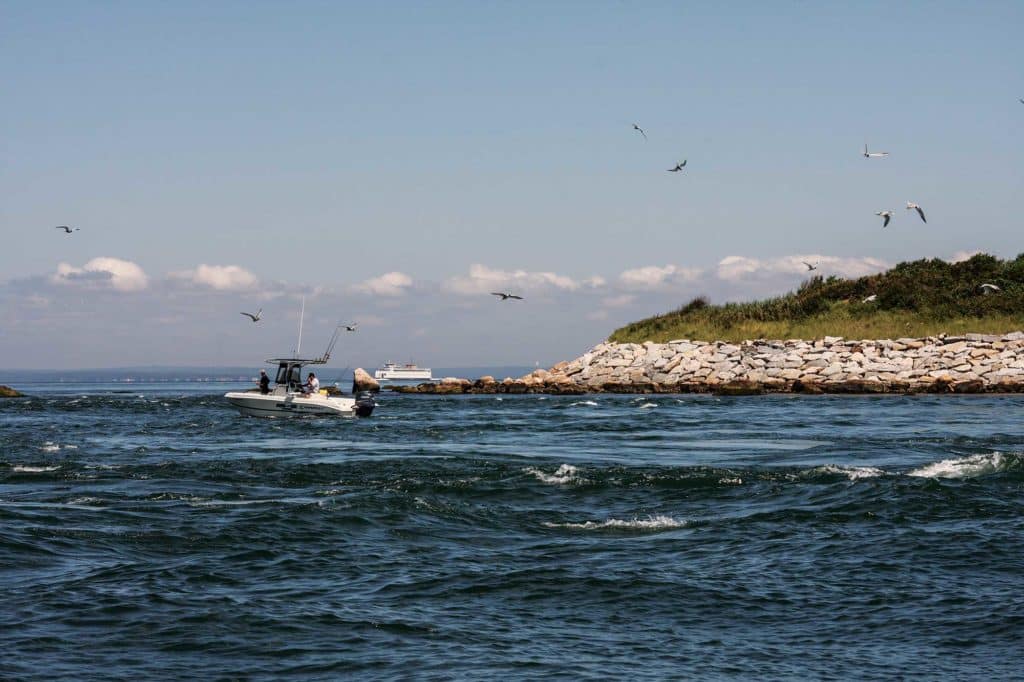
Three-Ways
Drifting lead-head bucktails off three-way rigs is a go-to for stripers and blues holding deep ahead of Northeast rips. “In the Race,” says Douton, “as in other rips, positioning your boat is fairly simple. Run uptide from the structure, start in water deeper than the shoal depth, and drift up the slope and over the high spot.
“The procedure for fishing three-ways is to drop the rig to the bottom, crank up three to five turns, and hold it,” Douton says. “Every time you feel a bump, which most of the time is bottom, swing the rod up, and take another three turns. That action either clears the rocks or sets the hook on a fish. What you are doing when fishing three-ways, in effect, is ‘trolling’ using only the current. The sinker hangs about 18 inches below the three-way swivel and keeps the bucktail down. Use enough weight to hold the bottom, and just vary the weight for the rips in your area. Use only 30-pound leader to the sinker so it becomes sacrificial in a hang-up.”
Douton advises using a 6½- to 7-foot boat rod in the 20- to 40-pound range with a slow taper. “In the Race, Plum Gut or other major rips, you’re fishing a sinker from 10 to 20 ounces,” he says, “and when you swing up those 20 ounces, a slow taper responds much quicker. We use 3/0 to 4/0 reels for diamond-jigging or drifting three-ways. We don’t use levelwinds because the mechanism slows the lure’s drop speed. We load reels with Dacron backing and top shot with 150 yards of 40- to 50-pound braid.”
“Stay light on the bucktail weight, like only 1¼ ounce on an 8/0 hook,” Douton advises. “When you go too heavy, the jig loses action, especially when the tide slows. Run the bucktail 4 to 6 feet behind the three-way swivel using 80-pound mono. Tip the jig with a bright pork rind. Use light-colored bucktails during the day and dark ones at night.”
Read Next: Giant Stripers and Bluefin off Block Island
Taylor and I finished our afternoon of diamond-jigging Plum Gut with a couple dozen big bluefish released, a small one in the cooler for the grill, and two false albacore releases while casting soft plastics — a bonus on any day.
The breeze laid off with the setting sun as we churned through the large wake of the Orient Point ferry before cruising back to the harbor, gabbing like giggling gulls about the big ones that got away.
Why You Shouldn’t Anchor in a Large Rip
• Your vessel creates a roadblock for others who would troll the area.
• The current drag on an anchor rode can pull a small boat under bow-first.
• Anchor retrieval is dangerous and often impossible.
• Maintaining bottom with your lures is unlikely because you must drift to keep pace with them.
• Rips might attract a fleet of vessels — some over 100 feet — all drifting down-current, and one anchored boat will cause “road rage” and possible collisions.
• It’s extremely difficult to horse a big fish in strong currents back to a stationary boat.
• Baitfish and predators often travel back and forth parallel to the rip line; anchoring prevents your ability to stay with those fish.
About the Author: Migdalski has been contributing to Sport Fishing for 20 years. He has written two fishing books: Fishing Diamond Jigs and Bucktails and Fishing Long Island Sound. Migdalski has fished the East Coast from Nova Scotia to Key West but spends most of his free time on Long Island Sound.

